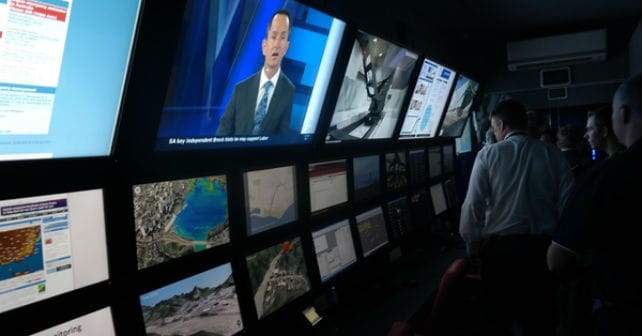New airport people mover more efficient, flexible
 Siemens today debuted a new model of airport people mover vehicle at the UITP World Congress for mobility and public transport in Vienna.
Siemens today debuted a new model of airport people mover vehicle at the UITP World Congress for mobility and public transport in Vienna.
Siemens has been working with Lohr Industrie since 2004 to develop the new Neoval generation of rubber-tired, fully automated metro. The new pre-series Airval vehicle provides increased passenger comfort, increased energy efficiency, improved flexibility and reduction of implementation and operating cost.
Siemens’ Neoval research and development programme has given life not only to the Airval, but to the Cityval, a smart modular train for sustainable urban development. Like their predecessor — the Val 208 — both the Airval and Cityval are driverless, rubber-tired and modular transportation systems.
Airval’s one- to six-car configuration provides a flexible capacity of 1,000 to 30,000 passengers per hour and per direction. The service capability of up to 24 hours, seven days a week, is adapted to the fluctuating demand of large airports.
“This new design allows a full customisation of the vehicle to our customers’ needs and an easy localisation in the various regions of the world,” said Hans-Joerg Grundmann, CEO of the Siemens Mobility Division.
The passenger service of Airval and Cityval are optimised thanks to an operating speed of 80 kilometres per hour and a high acceleration and deceleration rate, meaning travel times for passengers can be considerably shortened.
Since the beginning of March 2009, the first Neoval pre-series vehicle has been running on Lohr’s test track in Strasbourg, France. As most mechanical tests were already achieved last year on the prototype vehicle, the major focus for the testing period is now to evaluate the passenger comfort and communication tools and to run a 30,000-kilometre driverless endurance test.
One main goal of the development programme was to minimise the energy consumption and reduce the system to the lowest emission of dust or noise. The reduction of electrical consumption was achieved by combining several innovative concepts like 100-per cent electrical braking in service and energy re-use on-board and along the line through a combination of energy storage with double-layer capacitors and batteries, as well as fleet optimisation algorithms that maximise the re-use of energy by accelerating trains.
“The system is innovative but is made of components already successfully in operation,” said Robert Lohr, president of the Lohr Group.
Siemens’ mobility systems have transported more than two billion passengers since 1983. Those systems include four airport people movers — at Orly and Charles de Gaulle airports (two lines) in Paris, as well as at Chicago’s O’Hare airport — and urban systems are operated in France in Lille (two lines), Toulouse (two lines), and Rennes as well as in Taiwan and in Turin. Another Val system is now under construction in Uijeongbu, Korea.




